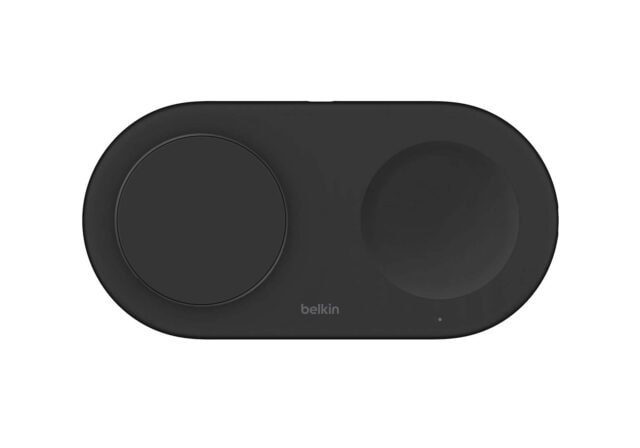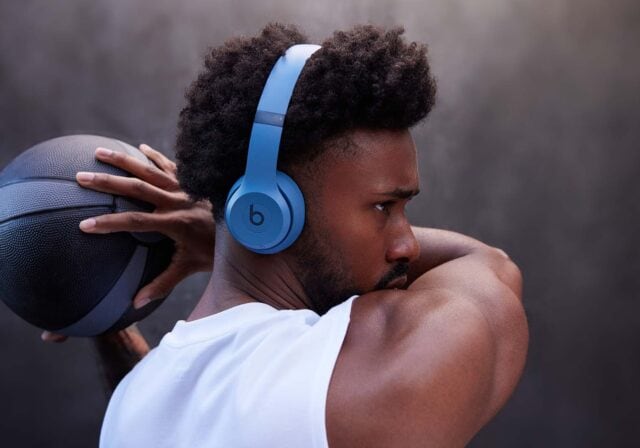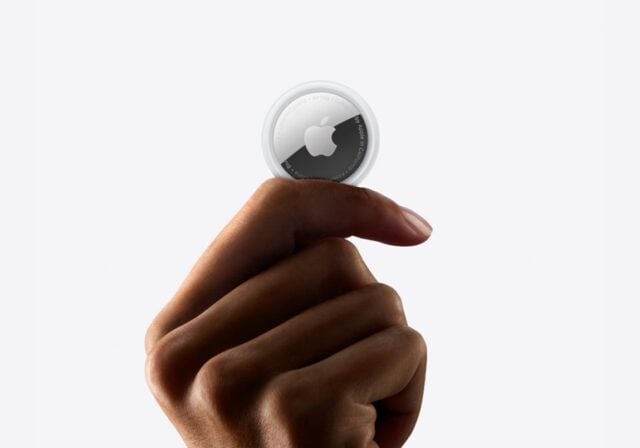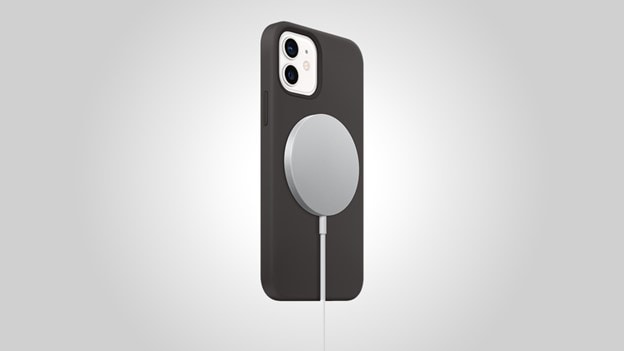Gone are the days of messy wires and the need to actually plug your charger into a device. The advent of wireless charging has allowed us to finally cut the cord, while staying comfortably powered up and connected. But how does it all work? Are some products better than others? We’ll take a closer look into the technology behind it, our top products, and a glimpse into the future of wireless charging.
What is wireless charging?
Wireless charging, also known as inductive charging, is a method of charging electronic devices without the need for a physical connection between the device and the charger. Instead, the charging happens via electromagnetic fields. Plugging a device into a charger means that the device is relying on conductive charging to move electricity from the power source to the device.
Wireless charging usually requires two components: a charging pad or mat and the device in need of a charger. To conduct electricity, both the electric device and the charging pad contain a coil of wire. The connection between the charging pad and the power source (usually a wall outlet) generates an electromagnetic field. This electromagnetic field induces an electrical current inside the device, and that current charges the battery.
In order to induce the current, the charging pad and the device must be close to each other. The strength of the electromagnetic field depends on the distance between coils. The closer the coils, the faster the charge. There is one big drawback to wireless charging: It’s generally not as fast as wiring your device directly to the power source.
3 types of wireless charging
As wireless charging continues to evolve, it's good to know the different technologies that make it work. While many devices use a pad-based system that you might be familiar with, not all wireless charging is the same. The 3 most common methods are:
- Electromagnetic induction
- Resonant charging
- Magnetic alignment
Each has its own perks and downsides when it comes to efficiency, range, cost, and compatibility. The table below explains how each method works, along with their pros, cons, and typical use cases, to help you better understand the world of wireless charging.
Wireless charging comparison chart
| Type | How It Works | Pros | Cons | Common Uses |
|---|---|---|---|---|
| Electromagnetic Induction (Inductive Charging) | Electricity flows through a coil in the charging pad, generating a magnetic field that induces current in the coil inside the device. | - Simple and efficient at short distances | - Requires close alignment | Phones, earbuds, watches, toothbrushes |
| - Widely used (Qi standard) | - Slower than wired charging | |||
| - Safer, less heat | - Inefficient at longer ranges | |||
| Resonant Charging | Uses coils tuned to the same frequency, allowing energy transfer even if coils are misaligned or farther apart. | - Greater tolerance for distance and misalignment | - More complex and costly | Industrial devices, smart furniture, automotive, medical tools |
| - Can charge through materials | - Less energy-efficient | |||
| - Multi-device | - Not widely supported in consumer tech | |||
| Magnetic Alignment (e.g., MagSafe, Qi2) | Adds magnets to inductive coils for perfect alignment, improving efficiency and enabling fast wireless charging. | - Ensures proper coil alignment | - Device must support magnetic alignment | Apple MagSafe iPhones, Qi2 phones, accessories like stands and car mounts |
| - Supports fast charging | - Often proprietary systems | |||
| - User-friendly design |
2 advantages of wireless charging
While wireless may be a little slower than wired, the advantages are unmistakable. Besides, magnetic fast-charging technology is starting to change that. But here are some of the other perks:
- It’s convenient. Cords can be messy and easy to misplace, as anyone who has ever fumbled in the tiny space between the nightstand and the wall to find an elusive charging cord can attest. Wireless chargers, which consist of a simple, sleek pad or stand, stay put and make it much easier to, say, place a laptop on top and continue your work.
- It’s versatile. Wired charging means constantly toting a slew of different bespoke chargers around to ensure each device can connect to a power source. Wireless chargers are generally one-size-fits all, so you can charge multiple devices on the same charging pad. One caveat: A couple of popular devices, like the Apple watch, don’t support the Qi standard, which can be frustrating. We’ll take a closer look at that later.
4 disadvantages of wireless charging
- Slower than wired charging: Especially on older devices or basic pads. Newer Qi2 chargers help close the gap.
- Alignment matters: Devices must be properly positioned for optimal charging.
- Less efficient: Some energy is lost as heat, though Qi2 and magnetic alignment improve efficiency.
- Limited mobility: You can't easily use your device while it's charging on a flat pad, though stands and mounts help with this.
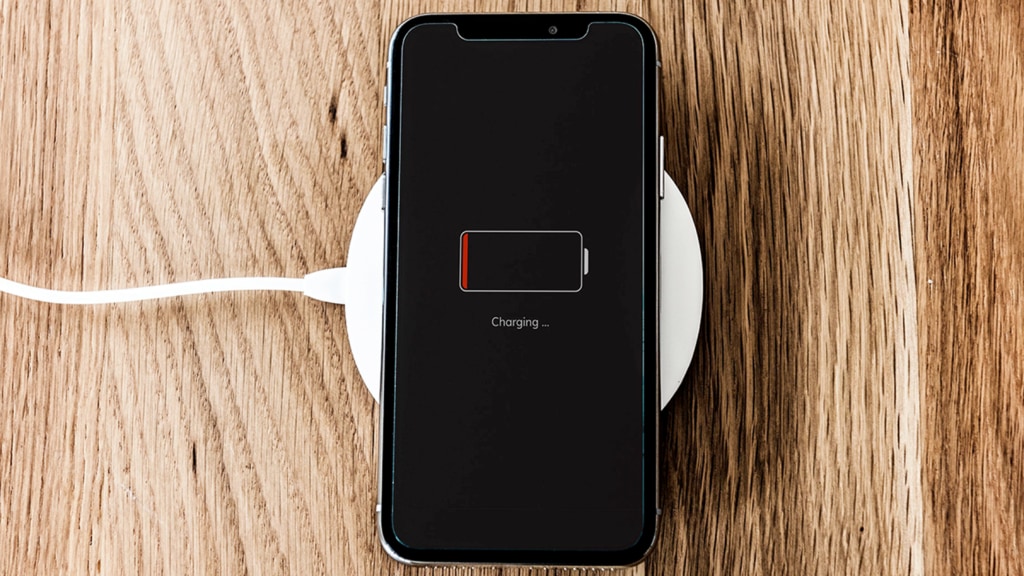
4 different wireless charging terms explained
Many of the devices we use on a day-to-day basis support wireless charging - smartphones, smartwatches, earbuds, etc. But, as noted in the chart above, devices can use two different types of wireless charging technology (or standards) depending on type and brand: Qi and Powermat.
While Qi is the most commonly used wireless charging standard, Powermat is used in public charging stations and is commonly used for things like medical equipment. Here’s a guide to the different types of wireless charging and the devices each type supports.
1. Qi standard.
Qi (pronounced “Chee”) is the most common wireless charging standard, supported by most modern smartphones and accessories - except the Apple Watch. It uses a charging pad or mat to generate an electromagnetic field that induces current in a coil inside the device. Qi supported various wattages (5W, 7.5W, 10W, 15W), with higher wattages enabling faster charging depending on the device. Qi2, the latest version, adds a Magnetic Power Profile for better alignment, efficiency, and safety - similar to Apple’s MagSafe - offering up to 15W charging across all compatible devices. Both Qi and Qi2 allow users to switch between wired and wireless charging for convenience.
2. PMA (Powermat) wireless charging.
Powermat is another charging standard that launched to quite a bit of fanfare, with brands like Starbucks and McDonalds adopting Powermat at their public charging stations. Powermat also uses inductive charging to charge devices wirelessly, and the technology was later acquired by AirFuel alliance (more on that below).
Basically, PMA works similarly to the Qi standard, but specifies a different frequency range of 277-357kHz and a maximum charging distance of 5cm. However, one problem with PMA was the fact that it uses a different charging protocol than Qi, meaning that devices supporting PMA weren’t compatible with Qi charging pads, and vice versa. Since Qi - and now Qi2 with its improved alignment, efficiency, and universal compatibility - became the more widely adopted standard, PMA began to disappear as Qi won the wireless charging wars. However, the company has since shifted its focus to industrial efforts.
3. AirFuel wireless charging.
In 2015, the two main wireless charging standards, Qi and PMA, merged into a single standard called the AirFuel Alliance. And in 2017, Apple announced that its devices would use Qi foriPhone wireless technology, meaning the battle was pretty much settled in Qi’s favor. Today, Qi and Qi2 remain the leading standards for smartphones and accessories, while AirFuel technologies are primarily used in industrial, medical, and commercial applications. Although some older pads supported both Qi and PMA for compatibility, Qi2 is expected to unify charging under one standard.
4. Magnetic alignment fast charging.
Wireless magnetic fast charging works in exactly the same way inductive charging works: by transmitting electromagnetic fields wirelessly between coils. It simply aims to solve the speed issues endemic to charging wirelessly versus connected. Wireless fast charging uses a higher charging voltage and/or amperage to increase charging speed. However, not all devices support wireless fast charging, which is generally limited to newer devices. And not all charging pads are capable of wireless fast charging. These pads may also use different standards, such as Quick Charge, USB Power Delivery, or proprietary technologies.
To identify a charging pad that supports wireless fast charging, check the wattage rating. The numbers 10W, 15W, 20W, or 25W indicate the maximum power output of the charging pad, and these outputs are considered wireless fast charging range.
5 wireless charging accessories and how to use them
Let’s take a closer look at wireless pads and 5 types of wireless charging devices and how to use them.
- Wireless pad. A wireless charging pad is a flat surface that charges your device wirelessly. It is typically designed to be compact and portable, making it convenient to use at home, in the office, or while traveling. They must, however, be connected to a power source like a wall outlet. Once plugged in, simply place your device on top of the pad and wait until the charging indicator appears.
- Wireless stand. A wireless charging stand functions just like a pad, but holds a device at an angle while charging it wirelessly. This allows hands-free use while charging, making stands ideal for video calls, watching videos, or other activities that require the device to be propped-up. Wireless charging stands may offer different charging speeds and may support different wireless charging standards.
- Wireless car mount. This is basically just a wireless charging stand that is designed for your vehicle, so it stays put. Just plug it into your vehicle’s power outlet, attach it to the dash or windshield, and it secures your phone as it charges.
- Power bank/juice pack. Not near an outlet? That’s where a power bank or “juice pack” will come in handy. It is an excellent wireless source of power when there are no plugs in sight, making it easy to charge your device on-the-go.
- Power station. You’ll find these in public spaces such as airports and coffee shops, where multiple people may need to charge their devices at the same time. A wireless charging power station includes multiple charging pads or coils in order to power multiple devices at a time, along with USB ports and other connectors that allow devices to charge more quickly.
Top 6 wireless charging devices
Whether you’re looking for wireless charging at home or on-the-go and want the fastest charge available, there are plenty of options to keep you powered up without the clutter of cables. Here are some of our favorites.
*Product pricing and availability are subject to change. Visit our website for the latest offers on phones, devices, and accessories.
*This comparison guide was created by T-Mobile to help you explore products sold in our store. The opinions expressed here reflect our editorial perspective based on publicly available features, specifications, and articles.
1. Best Stand: Belkin Qi2 15W Wireless Charging Pad-Stand
Sometimes you need a battery boost but don’t want to interrupt the action on your device. This handy folding stand is great for home, office, or travel and keeps your iPhone or Qi2-compatible device upright while providing 15W of power.
- Pros: Can continue to use device while charging.
- Cons: Pricier than more basic pads and stands.
2. Best car mount: iOttie Qi2 Mini Wireless Car Vent Mount
Keep your focus in the car without worrying about charging with a 15W car vent mount that supports save driving and can keep your device powered even while you’re using navigation or music streaming apps.
- Pros: Great for safely using navigation while driving.
- Cons: Only works for smartphones and compatible cases.
3. Best charging pad: Mophie 15W Wireless Charging Pad
This sleek device is a great charging pad for those who want to ditch the cables. What sets this charger apart is the included 30W Gallium Nitride (GaN) charger, which enables faster and more efficient charging.
- Pros: Fast charging, sleek design.
- Cons: Less power than some other devices.
4. Best charging pad for iPhone lovers: Apple MagSafe Charger
Perfect for iPhone 12 or later, the MagSafe Charger delivers fast wireless charging (up to 25W) when paired with a 30W power adapter. It’s also compatible with Qi2 and Qi charging, so it can be used to wirelessly charge your iPhone 8 or later, as well as any AirPods with a wireless charging case.
- Pros: Apple-friendly magnetic charging and Qi + Qi2 compatible.
- Cons: Slower charging for older-model iPhones.
5. Best portable 2in1 pad: Belkin Qi2 15 W 2in1 Wireless Charging Pad
Charge more with less clutter. This slim and portable 2-in-1 pad delivers fast 15W magnetic wireless charging for your Qi2-compatible smartphone, plus a 5W pad for your wireless earbuds. It even includes a bonus 5W USB-C port to power a third device like a smartwatch or accessory. The magnetic ring ensures perfect alignment every time, and the included 30W USB-C wall charger means you're ready to plug in right out of the box.
- Pros: Compact folding design, charges phone and wireless earbuds simultaneously.
- Cons: Slower charging for secondary devices (5W output).
6. Best pocket-sized with stand: Mophie PowerStation Mini with Stand
This pocket-sized power bank is perfect for on-the-go charging, offering 15W of Qi2-certified wireless fast charging and magnetic alignment for your iPhone or other Qi2-compatible devices. The built-in kickstand lets you prop up your phone in portrait or landscape mode so you can stay powered while you scroll, stream, or video chat.
- Pros: Fast 15W wireless charging, MagSafe-style snap alignment, built-in kickstand.
- Cons: Doesn’t offer as much capacity as larger power banks.
Future of wireless charging
As we continue to adopt a wide range of devices into our everyday lives, from phones, to tablets, to watches, and more - the demand for faster, more effective wireless charging has only grown. That means advances like faster charging speeds are likely on the horizon, along with developments like longer-range (contactless) charging. In addition, more and more smart devices come standard with wireless charging capabilities.
Until then, adopting a wireless charging pad, stand, mount, or power bank could simplify your life and cut down on clutter as you move one step closer to cutting the cord for good.
Wireless charging FAQs
1. Which devices can use wireless charging?
Most modern smartphones, earbuds, smartwatches, and even some laptops and tablets support wireless charging, especially those compatible with the Qi or Qi2 standards. Popular brands like Apple, Samsung, Google, and more include wireless charging in many of their devices. However, some devices, like the Apple Watch, use proprietary charging systems and may not work with standard Qi charging pads.
2. Does wireless charging harm my battery?
No, wireless charging is safe for your battery when using certified chargers. Both Qi and Qi2 standards include built-in protections against overheating, overcharging, and short-circuiting. However, excessive heat, whether from wireless or wired charging, can degrade batteries over time, so it's best to avoid using low-quality or uncertified chargers.
You might also be interested in:
- Shop All Chargers at T-Mobile
- What Is MagSafe? What Every Apple Lover Should Know
- Top MagSafe Picks
- Tech Gifts That Won’t Break the Bank: Under $50
Sources:
https://www.belkin.com/products/product-resources/wireless-charging
https://www.lenovo.com/us/en/glossary/wireless-charging
https://www.belkin.com/company/blog/wireless-charger-vs-wired
https://www.eeworldonline.com/infographic-inductive-vs-resonant-charging
https://www.digikey.com/en/articles/inductive-versus-resonant-wireless-charging
https://www.wired.com/story/what-is-qi2-wireless-charging
https://www.belkin.com/products/product-resources/what-is-magsafe
https://support.apple.com/guide/iphone/magsafe-chargers-and-battery-packs-iphac0f12e49/ios
https://www.androidauthority.com/wireless-charging-battery-health-3198991


